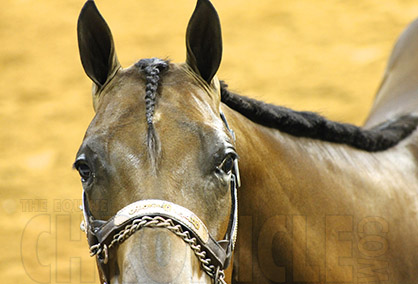Tips For Trailering Your Asthmatic Horse
Humans aren’t the only species that suffers from asthma. Your horse can, too. So what do you do when you need to put your asthmatic horse on a trailer?
According to a consensus statement by the American College of Internal Veterinary Medicine, there are two types of Equine Asthma Syndrome. The first type is called Inflammatory Airway Disease (IAD), which describes mild to moderate equine asthma. Recurrent Airway Obstruction (RAO) or SPRAO, is the name for severe equine asthma. In the past, severe equine asthma has gone by the name heaves, and later COPD.
Horses with Equine Asthma Syndrome suffer from occasional coughing and poor performance. Those with the severe version battle regular to frequent coughing, exercise intolerance and increased respiratory efforts, even at rest.
Since these symptoms are caused by dust or allergens, trailering can potentially exacerbate the condition. However, according to Jonathan Yardley, D.V.M., assistant professor at The Ohio State University College Of Veterinary Medicine, there are a few precautions you can take to make the trip more comfortable.
Minimize dust
Since asthmatic horses are triggered by dust, one of the most important steps when trailering them is to do your best to eliminate dust from the trailer environment. Though feeding your horse can help keep him calm during a long trailer ride, hay is unfortunately a big source of dust.
“Ideally don’t use any hay, because hay blows dust and particles in the horse’s face,” Dr. Yardley said.
Bedding is another big source of dust. Straw is usually the dustiest, but wood shavings aren’t much better. The ideal trailer bedding is any sort of processed bedding, such as Woody Pet Professional Animal Bedding, that can be moistened to decrease the dust. Minimizing dust should be your goal with any horse, but it becomes even more important with an asthmatic one.
Take breaks
Though it’s tempting to get to your destination as quickly as possible, it is important to stop every few hours to give your horse a break from the trailer. This allows them to lower their heads, clear their airways, and breathe dust-free air.
Again, Dr. Yardley said, trailering best practices for asthmatic horses are really just best practices for any horse. All horses should get a break every few hours during long hauls.
Be careful trailering a horse on steroids
Steroids are commonly used to treat equine asthma. However, if your horse is on a high dose of steroids, shipping him could cause other problems.
“Steroids suppress the immune system, so that could potentially set the horse up for pneumonia,” said Dr. Yardley .
Pneumonia is one of the most common problems associated with trailering horses, and your horse’s risk of contracting it climbs significantly higher when on steroids, so keep this in mind before loading your horse on the trailer.
At the end of the day, trailering an asthmatic horse isn’t that different than trailering your other horses. A little forethought and common sense can make all the difference.
To learn more about equine asthma, catch Dr. Yardley’s talk—“Managing Asthma in the Equine Athlete (while staying compliant with competition medication rules)”—at the All American Quarter Horse Congress in Richwood, Ohio on Friday, October 20th, 2017.











